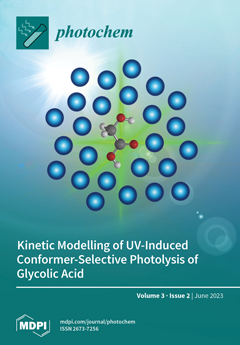Benzophenones (BPs) frequently occur in water environments, and they are able to both screen UV light and to sensitize reactive intermediate (RI) production. However, BPs have largely been overlooked as a background water component when studying photodegradation of co-existing organic micropollutants (OMPs). Therefore,
[...] Read more.
Benzophenones (BPs) frequently occur in water environments, and they are able to both screen UV light and to sensitize reactive intermediate (RI) production. However, BPs have largely been overlooked as a background water component when studying photodegradation of co-existing organic micropollutants (OMPs). Therefore, in this study, we investigated the influence of BP and its derivative oxybenzone (BP3) on the degradation of the co-existing model OMP sulfamethoxazole (SMX). A series of photodegradation experiments were conducted covering a range of BPs concentrations in μg/L levels, and the degradation of 1.00 μM of SMX was studied. The addition of BP at 0.10 μM, 0.25 μM, and 0.30 μM, and BP3 at 0.10 μM and 0.25 μM, significantly increased the first order degradation rate constant of 1.00 μM of SMX (
kobs(BP)) by 36.2%, 50.0%, 7.3%, 31.5%, and 36.2% respectively, compared to that in the absence of any BPs. The maximum indirect photodegradation induced by BP and BP3 reached 33.8% and 27.7%, respectively, as a percentage of the observed SMX degradation rate at the [BPs]/[SMX] ratio of 0.25. In general, triplet excited dissolved organic matter (
3SMX*,
3BP*, and
3BP3*) played the major role in the photosensitizing ability of BPs. The results further implied that the increase of SMX degradation at the molar ratio of 0.25 was possibly due to
3BP* for the mixture of SMX and BP. Overall, this study revealed the sensitizing ability of BP and BP3 on the co-existing OMP, SMX, in water for the first time. Our findings can be applied to other BP type UV filters which are similar to BP and PB3 in molecular structure.
Full article





